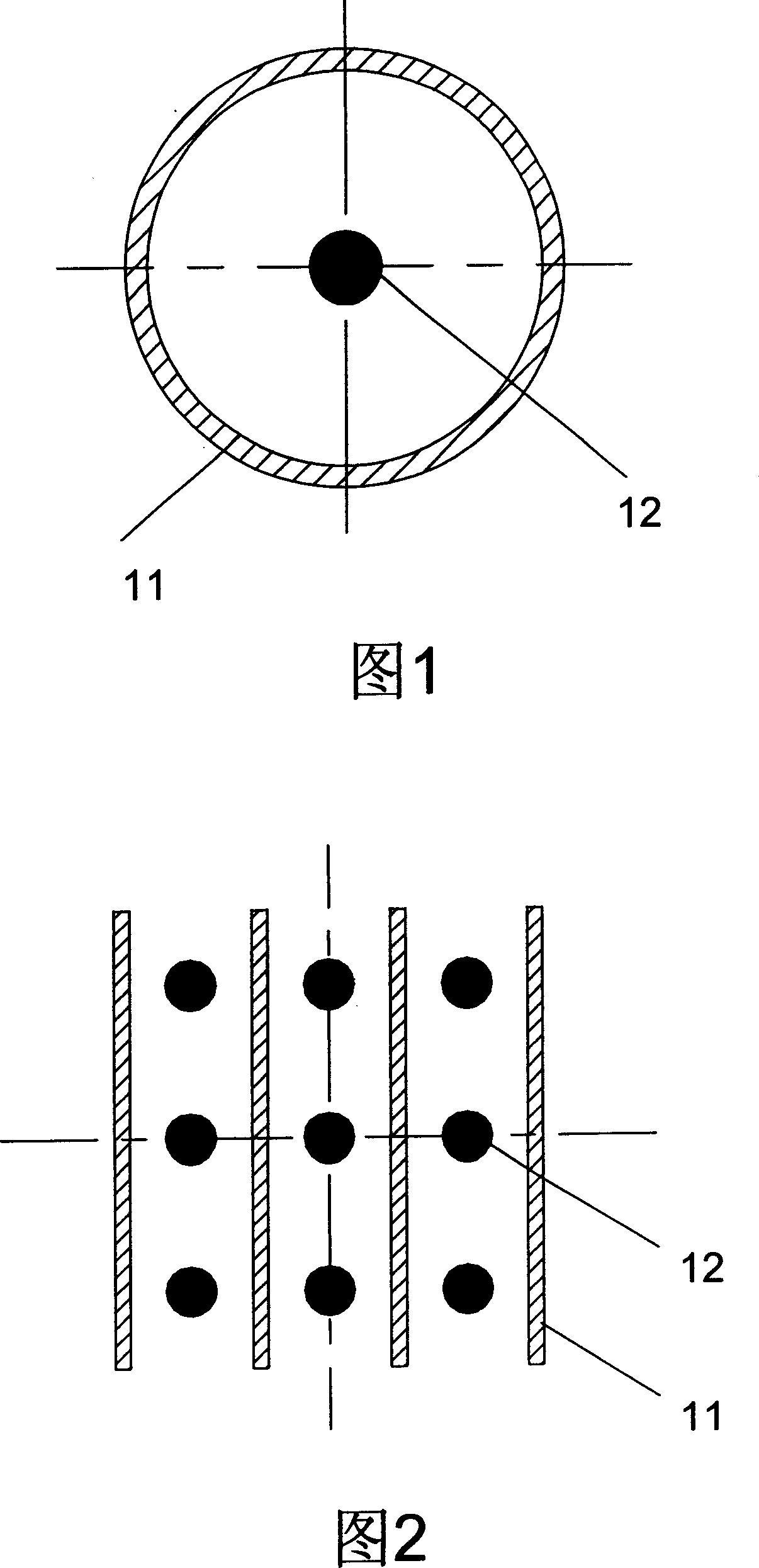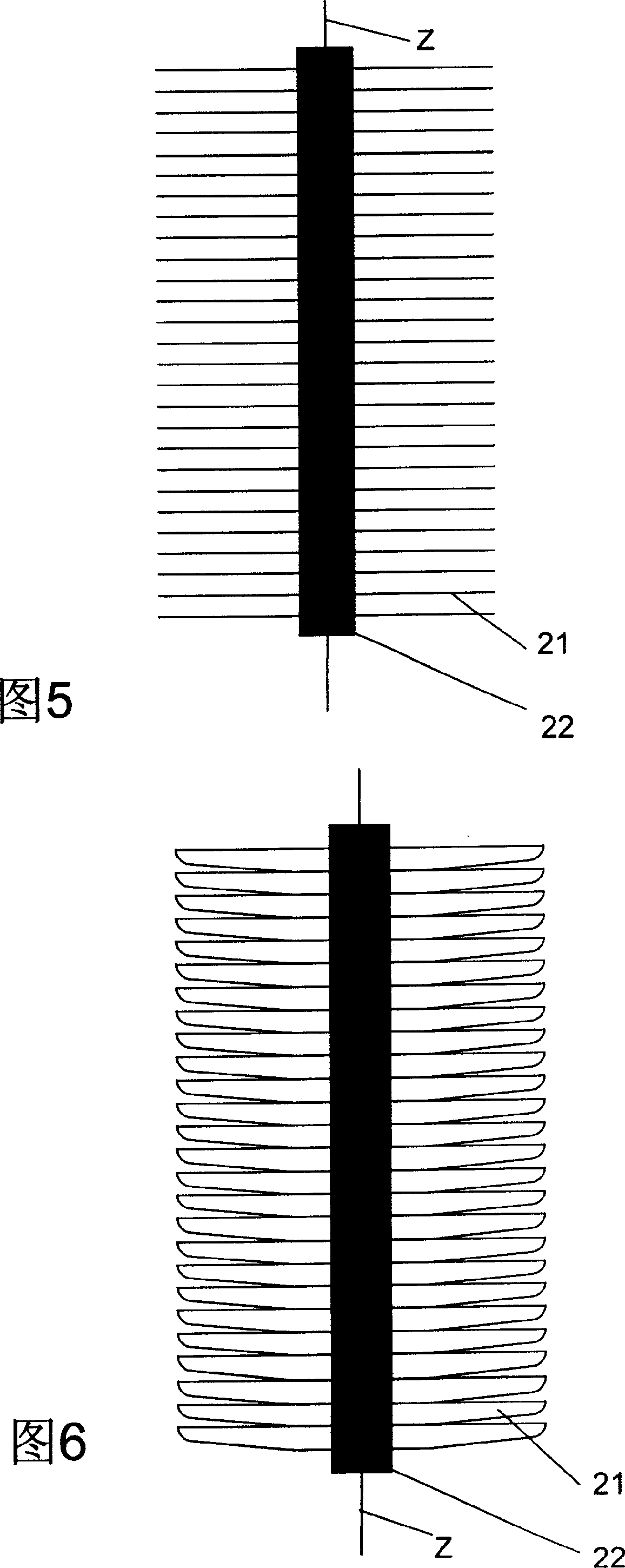Thin plate combined type photocatalyst carrier structure
A photocatalyst and combined technology, which is applied in the direction of catalyst carrier, physical/chemical process catalyst, chemical instrument and method, etc., can solve the problems that can no longer provide surface area, affect the photocatalytic efficiency of the system, and cannot be irradiated by ultraviolet light.
- Summary
- Abstract
- Description
- Claims
- Application Information
AI Technical Summary
Problems solved by technology
Method used
Image
Examples
Embodiment Construction
[0035] In order to better understand the above technical solutions of the present invention, a further detailed description will be given below in conjunction with the drawings and embodiments.
[0036] Please refer to Fig. 3, shown in Fig. 4 first, thin-plate combined type photocatalyst carrier structure of the present invention comprises several thin plates 21, ultraviolet light source 22,
[0037] The several thin plates 21 are arranged and combined together in layers along the vertical axis Z direction of the ultraviolet light source 22, the ultraviolet light source 22 passes through the middle part of the several thin plates 21, and the surface of each thin plate 21 is loaded with a photocatalyst. Gaps for fluid flow are left between the thin plates 21 for the fluid to flow in these gaps.
[0038] The thin plate 21 is a plane plate or a revolving panel, and the revolving line of the revolving panel is any one of a straight line, an arc line, a folding line, and a bending ...
PUM
 Login to View More
Login to View More Abstract
Description
Claims
Application Information
 Login to View More
Login to View More - R&D
- Intellectual Property
- Life Sciences
- Materials
- Tech Scout
- Unparalleled Data Quality
- Higher Quality Content
- 60% Fewer Hallucinations
Browse by: Latest US Patents, China's latest patents, Technical Efficacy Thesaurus, Application Domain, Technology Topic, Popular Technical Reports.
© 2025 PatSnap. All rights reserved.Legal|Privacy policy|Modern Slavery Act Transparency Statement|Sitemap|About US| Contact US: help@patsnap.com



